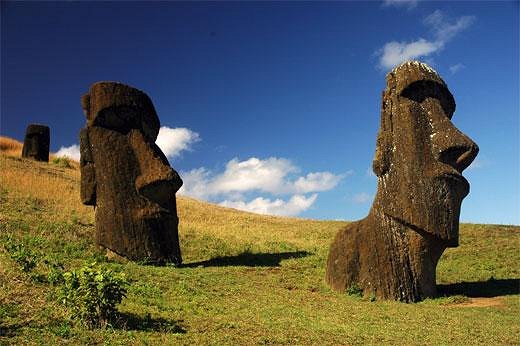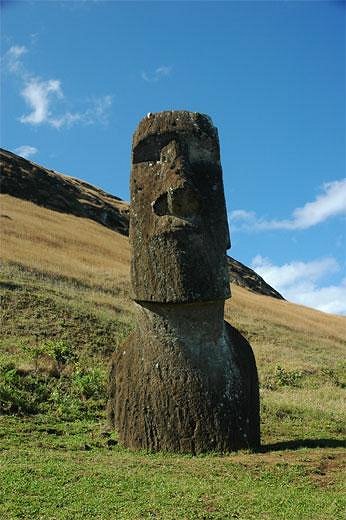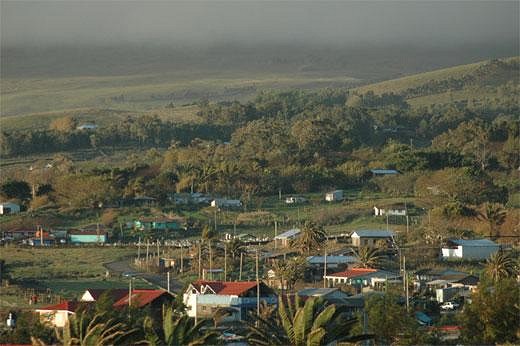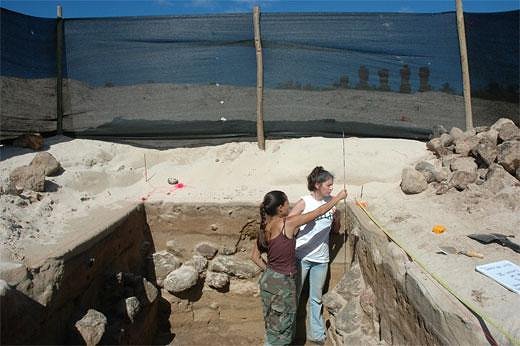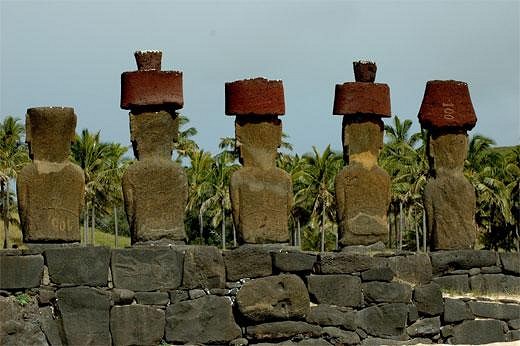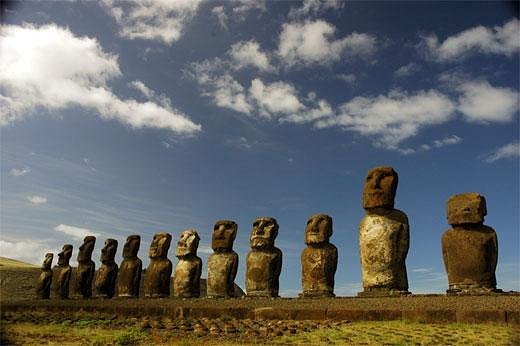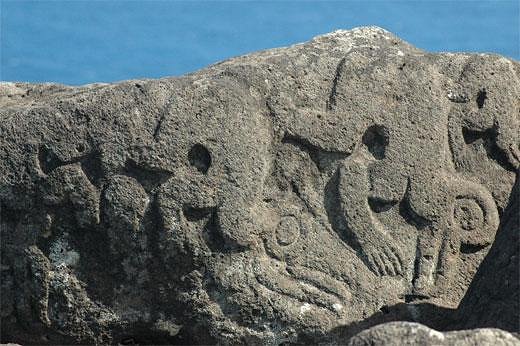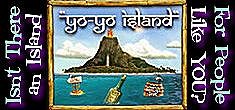Pages: 1 13 replies
|
TS
Tom Slick
Posted
posted
on
Wed, Mar 28, 2007 12:56 PM
Just found a cool little article on Rapa Nui from the Smithsonian. I'll post here with images for future readers: Hundreds of years ago, a small group of Polynesians rowed their wooden outrigger canoes across vast stretches of open sea, navigating by the evening stars and the day's ocean swells. When and why these people left their native land remains a mystery. But what is clear is that they made a small, uninhabited island with rolling hills and a lush carpet of palm trees their new home, eventually naming their 63 square miles of paradise Rapa Nui—now popularly known as Easter Island. |
|
P
Paipo
Posted
posted
on
Wed, Mar 28, 2007 6:24 PM
:lol: :lol: :lol: |
|
B
Benzart
Posted
posted
on
Wed, Mar 28, 2007 6:57 PM
Yes, Thanks Tom Slick, Very interesting piece and good pix too. There was a Lot happening back there that we will Never really be sure of how it went down. Why Why why? Too many unanswered questions. |
|
H
hewey
Posted
posted
on
Wed, Mar 28, 2007 8:37 PM
Yep, and thats the appeal :) I like a little mystery and intrigue. Great thread too! |
|
S
Son-of-Kelbo
Posted
posted
on
Wed, Mar 28, 2007 11:49 PM
Great post and info, TS! I suggest for companion immersion Thor Heyerdahl's AKU-AKU. Dated, true, but nonetheless a fascinating first-hand account of a major chapter in Easter Island's "modern rediscovery", with fascinating first-hand glimpses in to the personalities (and personal agendas) of the descendant population in the mid 20th Century, and generally great storytelling. Heyerdahl's theory that the very first islanders came from western South America (joined by Polynesian navigators later) is still compelling. And of course the film "Rapa Nui" is another must for the discerning Polynesiac's library, and really brings the visual sense of AKU-AKU to life, with a great score by Stuart Copland, transporting cinematography, great cast, and witty direction. Great fun that'll take you straight to "The Navel of the World", in spirit. Cheers and aloha,
|
|
T
TIKIBOSKO
Posted
posted
on
Thu, Mar 29, 2007 9:45 PM
“Hunt suspected that humans alone could not destroy the forests this quickly. In the sand's layers, he found a potential culprit—a plethora of rat bones. Scientists have long known that when humans colonized the island, so too did the Polynesian rat, having hitched a ride either as stowaways or sources of food. However they got to Easter Island, the rodents found an unlimited food supply in the lush palm trees,” This same problem is currently going on all over the South Pacific, rats (with no natural predators on the islands) are eating or damaging seeds when they hit the ground and many palm species are no longer propagating. It is a problem modern man has been unable to get a handle on and as I understand it took a while to confirm who or what the culprit was. Bosko |
|
TD
Tiki Diablo
Posted
posted
on
Thu, Mar 29, 2007 10:36 PM
pinchis ratas. No bueno! |
|
S
Sneakytiki
Posted
posted
on
Fri, Mar 30, 2007 3:44 AM
Thor Heyerdahl proved that man could travel over vast distances in short amounts of time but his theories which were pseudo-science have been almost completely disproved. If anyone were to discover anyone else it would be more likely that the sailing Poly's would discover the land hugging Amerinds. The boat Thor used was not accurate to pre-Columbian models and was heavily influenced by later Spanish influenced Mestizo designs. Much of the Easter island evidence was faked. Thor's detractors say "planted" by Thor, his supporters can only say he was duped. His methodology, if u can call it that, was similar to the scientific methodology of "cult" archeology groups, start with a foregone theory you've already made your mind up to be true, then grasp at any straw to "prove it" while ignoring the vast amounts of anthropologic, genetic, linguistic and carbon dating evidence that says otherwise. I admire the man for his jumpstarting the diffusionist theories of human travel capability and his courage etc.. But his theories make for fun fantasy reading and not much else, similar to theories of Atlantis or Lemuria that make no sense when one understands plate tectonics, continental versus oceanic crust etc.. There may well have been a few Indians in Polynesia but if so they left a very small footprint genetically, linguistically or culturally, and they certainly were not the progenitors of the Polynesians who are of Austronesian stock with a small amount of Melanesian admixture picked up along the migratory routes. The Easter Island pix and info. are fascinating, thx for posting them. To drown sorrow, where should one jump first and best? "Certainly not water. Water rusts you." -Frank Sinatra [ Edited by: Sneakytiki 2007-04-04 02:35 ] |
|
K
Kong-Tiki
Posted
posted
on
Sun, Apr 8, 2007 11:41 PM
Not so fast there, SneakyTiki. |
|
S
Sneakytiki
Posted
posted
on
Mon, Apr 9, 2007 11:33 AM
That theory has already been proposed and debunked. There are Caucasian and American Indian genes on Easter island. These genes don't prove any kind of "early" contact. It is impossible to prove when a gene entered the "pool" on Easter island. A similar theory showed that Easter Islanders have the most diverse gene pool of Polynesian genes out of any island/group a few years back and also showed that there were amerindian genes present on Rapa, this theory was supposed to give creedence for E. Island being the starting point of Polynesian culture, ala Heyerdahl, which then supposedly spread westward to C. Polynesia etc..contrary to prevailing well supported theories of Austronesian origin supported by linguistics, DNA. anthropology, archeology, carbon dating etc. . Only the most brief look at these results would lead one to believe that this proves anything other than that islanders have procreated with non Islanders. As to the antiquity of the genes the article conveniently left out the fact that slaver ships decimated E. Island and many other archipelago's early on and that through the work of various charitable and moral individuals it was arranged that Polynesian slave labor in S. America be halted. This was no big loss as the miserable Islanders were dying like flies and less than 10% had survived. It was arranged that a small ship would return the remaining Easter islanders and other natives home. The islanders continued to die off on the journey to E. Island and the decision was made to leave a group of 15 islanders from all the island groups on E. Island for fear that they would perish if the journey continued, hence, very diverse Polynesian DNA on Easter Isle as there were only a handful of natives left when these slaves were taken. The name Rapa- Nui isn't even native to the Easter isle dialect. There is also a well documented early occurrence that provides one of the many more likely explanations for European and Amerindian DNA in Rapa and Easter Islanders. That occurrence was the intentional marooning of two Peruvians and one Mexican sailor for punitive reasons. Peruvians and Mexicans from lower classes are most often Indian/Spanish Mestizos, sometimes with a little african blood thrown in for good measure. Do you think it's possible that on an island with very few individuals they could have inter-married and produced offspring. It seems very likely. This doesn't even take into consideration all the other sailors and tourists who've before and since passed through, so to speak. Another interesting note is that there was no Mitochondrial DNA that was specifically Indian, a large colony would have been Men AND Women. The oldest bones on Easter Island have been tested and showed no Indian genetic characteristics but did show SE Asian/Polynesian genetic characteristics. Thor said the Peruvian Vikings were there first...Why aren't the oldest bones some kinda' Euro-Indian? A genetic analysis was taken a couple of years back on a Lakota Reservation that could not find any individuals with less than 1/16th European ancestry. This even amongst those who called themselves "full bloods" and had no knowledge of their "white" ancestry. Now, according to the researchers methods you posted, I could use this as "evidence" to prove that the Sioux were descended in part from Long ago European types who traveled across the ocean and continent... It's the old Occam's Razor "when you have two competing theories which make exactly the same predictions, the one that is simpler is the better." So you have to look at ALL the facts and then ask yourself "What is more likely?" Probably misogny and intermarriage, white captives and natives raped, etc... I for one would be very surprised if there were never any Polynesians in N and S America. I would be mildly surprised to learn that there were never any Indians in the Pacific, but, to say that the Moai were based on Incan statues? To say that American Indians were a major contributor genetically and culturally to ALL Polynesians??? To say Polynesian culture spread from East Pac. to West??? I studied Non Western art history and S America/Polynesia are no more similar than any other two non Western cultures. There are precedents for large stone statues elsewhere in C. Polynesia. etc.. I'm not disputing diffusionist theories at all. Thor got that part right. His methods and particular "theories" (ideas really) based on "I think NW Indians were a major contributor to Polynesia cuz their artwork looks similar to me" etc etc, are on the other hand, highly unlikely and unreputable. He claimed that NW Amerindians were a large part of the Polynesians ancestors, no genetic proof for that. Being objective and looking at all evidence is good science. Being a layman and having an idea, then grasping at anything that supports it, while overlooking vast amounts of info that doesn't support it, is Cult science, pseudo science, racist science, nationalistic science, etc... There are several religious/cult groups that practice the same sort of "methods" Heyerdahl did. There are Chariots of the Gods "scientists" who claim exra terrestrial intervention was necessary to perform any of the wonderful feats that humans have accomplished. When you educate yourself on the cultures, look at ALL the possibilities, are aware of the various explanations, the "science" these guys do is lame. Easter Island has only been occupied a few hundred to a 1000 years based on anyone's estimates from either camp, so any ANCIENT genetic evidence is self disproving. Usually within 5 -7 generations (approx. 120 years or so) the specificity of a genes introduction time-wise is lost due to all humans being incredibly similar genetically and the great amount of shared DNA we all carry. Those marooned sailors were well before 120-140 years ago. In a large population like Germany for example, the average German has 6% East Asian blood, based on any given individual it's impossible to tell if the ancestry is from 4 generations or so back or a cumulative large admixture from hundreds of years ago x many ancestors. Now when you take the national average consistently being that high (If only HITLER knew, hehe!) It points at a large cumulative admixture far enough back for it to evenly disperse. Most scientists agree Mongol invasions are the answer. Now in a small population like Easter Island post contact with say 100 individuals or less, a couple of inter-racial liasons can become a significant portion of the cumulative DNA in a very short amount of time, averaging homogenously like the Germans Asian genes in far far less time due to the small population. Also please consider the source of the article/study you posted. Oslo!! Since Heyerdahl's "red headed viking Indians settle the Americas and Pacific" theory some people in a certain part of the world have tried to "prove" that viking like... hmmmmmmm Norwegian types created every technological and navigational accomplishment in the Western world. I guess Pacific Islanders an' Native Americans were not smart enuf to build pyramids and Moai without red bearded Kon-tiki, the Peruvian viking to show us the way, LOL! it strikes me as ironic sometimes that Thor fought against the Nazis in WWII cus they sure would have liked his "science" and had similar theories themselves. BTW in archeological circles Oslo has a very bad name for turning out some nationalistic cult scientists. Peace, To drown sorrow, where should one jump first and best? "Certainly not water. Water rusts you." -Frank Sinatra [ Edited by: Sneakytiki 2007-04-22 03:26 ] [ Edited by: Sneakytiki 2007-04-26 09:07 ] |
|
K
Kong-Tiki
Posted
posted
on
Sun, Apr 22, 2007 2:52 AM
Now that you mention it.... |
|
S
Sneakytiki
Posted
posted
on
Sun, Apr 22, 2007 3:22 AM
Kong-tiki, thx for the info, interesting stuff. I never meant to imply that all Norwegians are conspirators in the Heyerdahl theories, just that certain nationalistic "scientists" and other groups like his idea of red haired Viking like/Norse-like/Norwegian types spreading their superior genes and technologies across the Western world. This sight is about fun and Kon-tiki is part of that fun/fantasy but it pisses me off when people are trying to say Thor's theories have merit, even now... Smacks of colonialism--cultural elitism and ultimately racism. I certainly have no beef against diffusionist science and firmly believe that more inter-cultural exchange took place than is currently preached... Solutrean-Clovis connection maybe, Polynesians in the Americas -very likely. Vikings civilizing Peru and Polynesia and NW Indians being majority ancestors of Polynesians ala Heyerdahl--BS! Again thanks for the info and I hope I didn't come off as slamming all of Norway, though I probably did. Lord knows there is plenty of propagandistic pseudo-science coming from the United States. Peace S |
|
K
Kong-Tiki
Posted
posted
on
Sun, Apr 22, 2007 3:39 AM
No sweat and none taken. It has to be said that Heyerdahl's fame usually overshadowed his controversy in his home country. His last theories were, however, more far out than anything he had done previously. The stuff that television shows like Xena and Hercules are made of. The short version is here: http://en.wikipedia.org/wiki/Jakten_p%C3%A5_Odin |
|
S
Sneakytiki
Posted
posted
on
Sun, Apr 22, 2007 4:46 AM
Kongtiki, I just re-read that article. It says the early Euro and Amerind genes are from pre-1800 only, not early as in founder or ancient contact. Here is a quote from the article. "Most archaeological and linguistic evidence suggest a Polynesian origin of the population of Easter Island (Rapanui), and this view has been supported by the identification of Polynesian mitochondrial DNA (mtDNA) polymorphisms in prehistoric skeletal remains. However, some evidence of an early South American contact also exists (the sweet potato, bottle gourd etc.), but genetic studies have so far failed to show an early Amerindian contribution to the gene pool on Easter Island. To address this issue, we analyzed mtDNA and Y chromosome markers and performed high-resolution human leukocyte antigen (HLA) genotyping of DNA harvested from previously collected sera of 48 reputedly nonadmixed native Easter Islanders. All individuals carried mtDNA types and HLA alleles previously found in Polynesia, and most men carried Y chromosome markers of Polynesian origin, providing further evidence of a Polynesian origin of the population of Easter Island. A few individuals carried HLA alleles and/or Y chromosome markers of European origin. More interestingly, some individuals carried the HLA alleles A0212 and B3905, which are of typical Amerindian origin. The genealogy of some of the individuals carrying these non-Polynesian HLA alleles and their haplotypic backgrounds suggest an introduction into Easter Island in the early 1800s, or earlier. Thus, there may have been an early European and Amerindian contribution to the Polynesian gene pool of Easter Island." Being as how the island was first documented as visited by Europeans in 1722, this makes perfect sense that some sexual contact between European and South American genes and native Easter Islanders would have taken place. Again the genes were Y chromosone or Male only. As far as the sweet potato, there is continual debate about whether it could have been carried by water or seeded by birds to disperse over the S. Pac. Almost all scientists are in agreement that the bottle gourd floated to South America from Africa (it's of African origin not S. American) where it is native. If that has merit then, well Polynesia's between the two. Of course both species could have been introduced by humans. This would only prove human contact however, and not Heyerdah's bizarre ideas about the peopling of Polynesia. Regards, To drown sorrow, where should one jump first and best? "Certainly not water. Water rusts you." -Frank Sinatra [ Edited by: Sneakytiki 2007-04-22 05:01 ] |
Pages: 1 13 replies

